If you're concerned about the environment, you're aware that planting trees is one of the most effective things you can do. Trees absorb carbon dioxide and provide oxygen, which helps to preserve the environment. If a tree has to be removed, then be sure it's a last resort. Tree Services Pensacola provides stump grinding, tree trimming, and stump removal.
Sumi Akter was at a crossroads. She could either stay in her farming village in western Bangladesh where her husband couldn’t find work or move five hours northeast to Dhaka, the country’s capital. Moving meant leaving behind her extended family and the only place she’d known in her life. But staying meant economic peril for her and her two daughters.
Akter’s hometown, Nasirpur, sits near the banks of the Kobadak River, which frequently swells with the ocean’s tides, sending rushing water through farms and homes. As a child, Akter, who goes by the daak name Bethi, would watch as cyclones flattened Nasirpur’s kutcha houses, made of mud and straw. Her father planted rice, jute, and vegetables on their modest plot of land only for the harvest to be washed away.
As the years passed, Nasirpur residents also began contending with declining snowmelt from the Himalayas and rising sea levels. These climate change-fueled phenomena made the area’s river system saltier — a disaster for the farmers who depended on reliable freshwater flows. By the time Bethi was contemplating her move in 2018, many residents had already fled to bigger cities in search of work. The region’s population had been declining, with one study finding 5.5 migrants from the area for every 1,000 people.
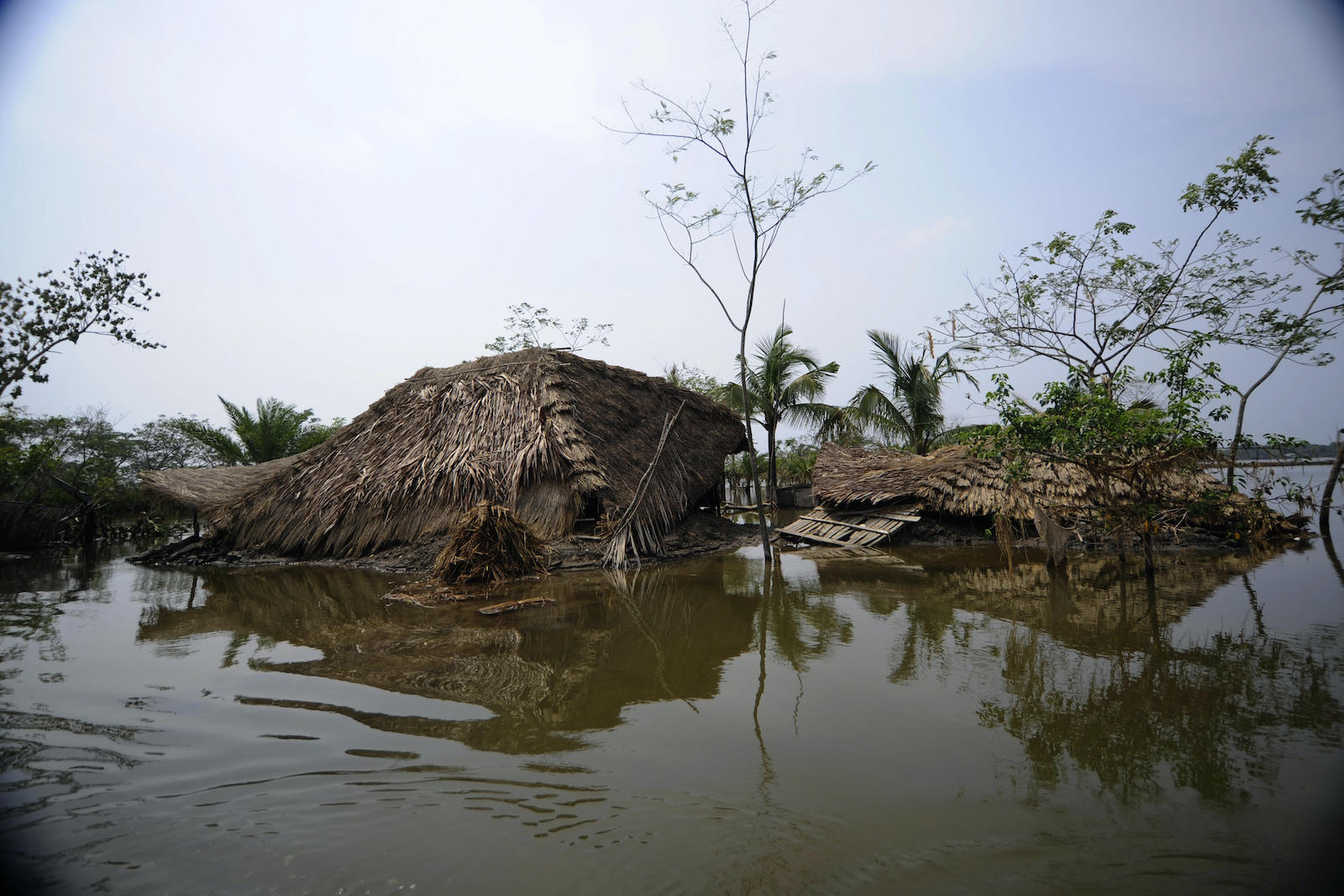
As Bethi weighed her options, she reached out to the Bangladesh Disaster Preparedness Center and spoke to a staffer at the front desk. The center is responsible for implementing the climate programs of another nongovernmental organization, Helvetas Bangladesh. Both groups work to reduce disaster risks by increasing coordination between various state and local governments, as well as funding skills training to ensure climate migrants succeed when they move. They offered Bethi a third alternative that she hadn’t yet thought of: enroll in a training program and start a business.
Helvetas would pay for Bethi to attend a three-month beautician training course. After that, she could set up her own salon. Bethi, who had never worked outside the home, liked the idea but had many hurdles to overcome — including convincing her conservative family to let her work and securing 130,000 taka (roughly $1,300) in capital loans. She persuaded her family that working would help secure her kids’ future, and found three groups willing to loan her the money.
Her perseverance paid off. Today Bethi owns and runs Boishakhi Beauty Parlour, named after her eldest daughter, just 10 minutes from Nasirpur. She has almost paid off her loans and has her sights set on expanding the salon’s offerings — perhaps even one day starting a beauty school.
“I couldn’t have imagined that I’d ever be fortunate enough to be able to get here,” she told Grist, speaking in Bengali through a translator over Zoom. “I’d never imagined this life for myself, that I’d be able to stand on my own two feet, that I’d be able to transform myself in this way.”
Bethi is one of millions of people worldwide whose lives have been indelibly altered by climate change. The planet has warmed by an average 1.2 degrees Celsius (2.2 degrees Fahrenheit) since preindustrial times, enough to accelerate or intensify an onslaught of cyclones, heatwaves, droughts, sea-level rise, and other natural disasters. The countries most vulnerable to climate change claim they have lost a fifth of their wealth due to climate change-driven increases in temperature and inconsistent rainfall patterns over the last 20 years.
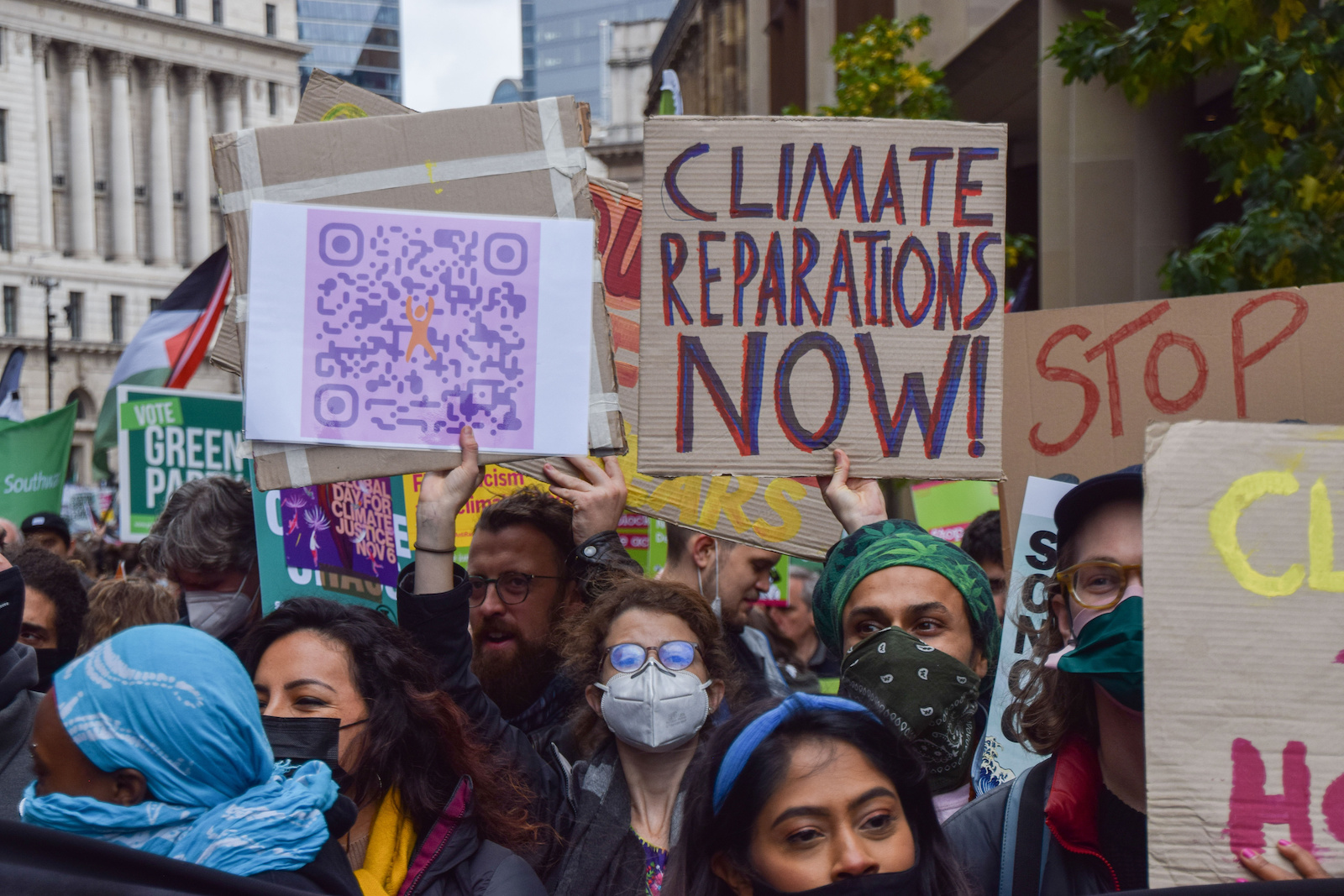
The result is a widespread loss of livelihood and displacement that’s only accelerating as temperatures rise. What’s more, these losses are primarily suffered by low- and middle-income nations that were late to industrialize, and therefore did little to contribute to global warming historically. According to the World Meteorological Organization, natural disasters caused 2 million deaths worldwide between 1970 and 2019; more than 90 percent were in developing countries.
In international negotiations, these climate-related outcomes are grouped under the compact moniker “loss and damage.” The origin of the phrase can be traced to 1991, four years before the first United Nations conference of parties, or COP, on climate change. Vanuatu, a small island nation in the Pacific, submitted a proposal to a UN General Assembly committee that year, arguing for an insurance scheme to “compensate small island states along with low-lying developing countries for loss and damage resulting from the consequences of sea level rise.”
The proposal didn’t go anywhere, but the term slowly took on a life of its own. By 2007, COP formally recognized the need for “means to address loss and damage associated with climate change impacts in developing countries.” Loss and damage became known as the third pillar of the Paris Agreement that was signed in 2016, when the world’s countries agreed to limit warming to 1.5 degrees Celsius. The other two pillars, adaptation and mitigation, refer to efforts taken to protect communities from the future effects of climate change and actions taken to curb greenhouse gas emissions, respectively. If mitigation and adaptation entail avoiding temperature rise and its consequences, loss and damage tackles the unavoidable pitfalls of a warming planet.
In the years since, the clamor in favor of acknowledging loss and damage, and funding restitution for it, has grown louder. Increasingly, climate advocates and developing nations have framed loss and damage funding as a form of reparations. Since late-industrializing countries — which run the gamut from major international players like India and Brazil to small island nations like Vanuatu — have done little historically to cause climate change, they argue that it’s unfair they now have to shoulder the burden of its deadliest effects.
Convincing early-industrializing countries like the U.S. to fund organizations like the one that helped Bethi could be one aspect of a global loss and damage program. The groundwork for this is already being laid: Helvetas Bangladesh is expanding its work with the help of a $250,000 grant from the Climate Justice Resilience Fund, a Washington D.C.-based philanthropy tasked with distributing money allocated during last year’s COP in Glasgow, Scotland.
Loss and damage is expected to take center stage at the 27th United Nations climate change conference, or COP27, in Egypt next month. Famine-level drought in Somalia and devastating floods that left one-third of Pakistan, a country responsible for less than 1 percent of the world’s carbon emissions, underwater have only added urgency to the issue.
Activists and developing nations hope to leave COP27 with a sustainable system for funding loss and damage restitution over the long term. In the past, countries have pledged funds to pay for climate projects in poor countries, with the assistance of the United Nations. The most prominent of these is the Green Climate Fund, which was established in 2010 with the goal of raising $100 billion per year to help developing nations respond to climate change. The fund does not cover loss and damage, and developed nations have only raised roughly $80 billion in loans and grants. Accessing money from the fund has also been a frustrating process plagued by bureaucratic delays for vulnerable countries.
Climate justice advocates hope to learn lessons from this failure as they try to establish a new mechanism to collect and distribute funding for loss and damage. The issue has been included for discussion in a provisional agenda, and they hope to see it formally adopted to the official COP agenda for the first time in the conference’s history. And since the conference is being held in a developing country for the first time in six years, advocates hope to leverage media attention to make the moral case for loss and damage funding. In a recent interview with Bloomberg, India’s environment minister Bhupender Yadav said that the focus on mitigation at last year’s COP “caused disappointment among the smaller countries over the lack of discussion on loss and damages.” He noted that India is working with other industrializing nations to demand compensation.
On the other hand, developed nations including the U.S. continue to sidestep the issue, fearing that acknowledging it would open up a Pandora’s box of litigation and lead to unlimited financial liability. Last month, in response to a question about whether the U.S. plans to direct funding to pay for loss and damage in poor countries, climate envoy John Kerry said that “the most important thing that we can do is stop, mitigate enough that we prevent loss and damage. And the next most important thing we can do is help people adapt to the damage that’s already there.” In a nod to the gargantuan costs of the climate crisis so far, Kerry added: “You tell me the government in the world that has trillions of dollars, cause that’s what it costs.” Some estimates put the price tag on loss and damage anywhere between $290 and $580 billion per year by 2030.
But while the U.S. and most other industrialized nations continue to punt on funding loss and damage restitution, some smaller rich countries have been stepping up. Earlier this year, Denmark became the first independent country to officially fund loss and damage compensation, setting aside $13 million for the cause. Denmark was following in the footsteps of Scotland, which provided a major breakthrough at COP26 last year.
The first week of the conference, Scottish first minister Nicola Sturgeon acknowledged that the country’s industrial past produced carbon emissions that built its wealth at the expense of nations now suffering the worst effects of climate change. More significantly, Scotland pledged £2 million (or about $2.3 million) toward loss and damage funding, becoming the first nation to put money on the table to compensate for loss and damage. It was a groundbreaking investment in keeping with the country’s progressive positions on climate change: Scotland established a climate justice fund in 2012 to help the world’s poorest countries adapt to climate change, and it has an ambitious goal of reducing carbon emissions by 75 percent by 2030.
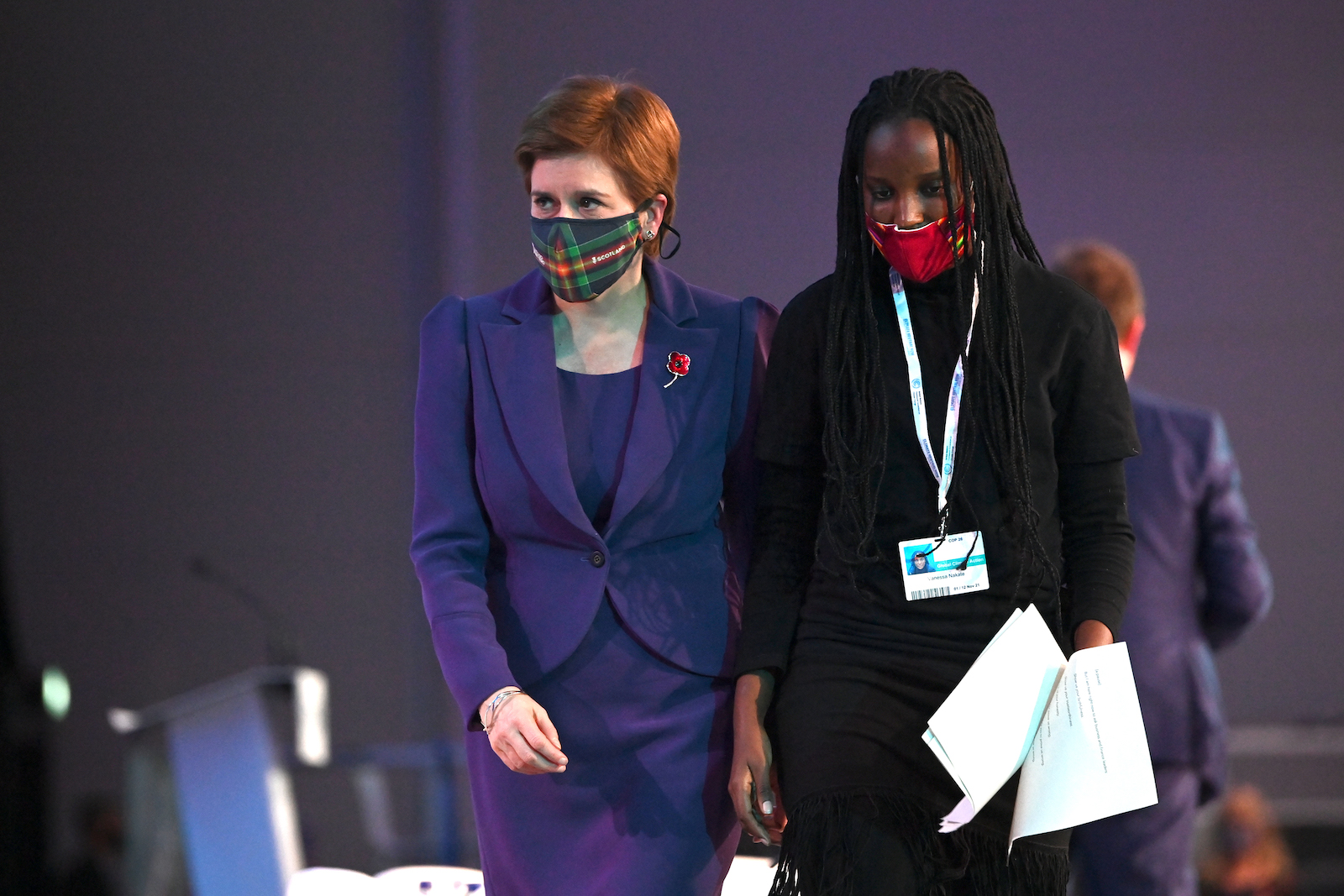
Although the monetary contributions were small compared to the need, it was a giant symbolic victory in the eyes of loss and damage advocates. “The biggest contribution of Scotland was de-tabooing the issue,” said Harjeet Singh, the head of global political strategy at the Climate Action Network, an international coalition of more than 1,800 environmental groups. “No developed-country government was even agreeing to talk about loss and damage at that level. The biggest breakthrough was a government coming forward and saying, ‘loss and damage is an issue, and I’m willing to put money behind it. It’s a matter of justice.’”
Advocates hoped Scotland’s commitment, which was announced early in the COP26 conference, would shift the conversation. “I was super excited and hopeful,” said Eva Peace Mukayiranga, a climate activist from Kigali, Rwanda. “I thought now there would be no more blocking [from developed countries]. Surely, there would be no more blocking.”
But Mukayiranga returned from Glasgow disappointed. For much of the conference, loss and damage advocates found themselves shut out of negotiations, leading some to later declare the proceedings “the most exclusionary COP ever.”
Lorenzo Raplili, a policy officer at the Pacific Islands Climate Action Network, was one of just a handful of Vanuatu citizens who managed to clear the various COVID-19 travel restrictions and make the two-day trek to Glasgow. A small island nation home to about 300,000 people, Vanuatu was recovering from Cyclone Harold which made landfall in 2020 and caused about $600 million in damages — 60 percent of the country’s gross domestic product. Despite Vanuatu’s position on the front lines of climate change, Raplili found that he and other advocates were not allowed to enter negotiation rooms where loss and damage was being discussed, even though the conference typically allows community groups and civil society representatives to observe COP proceedings.
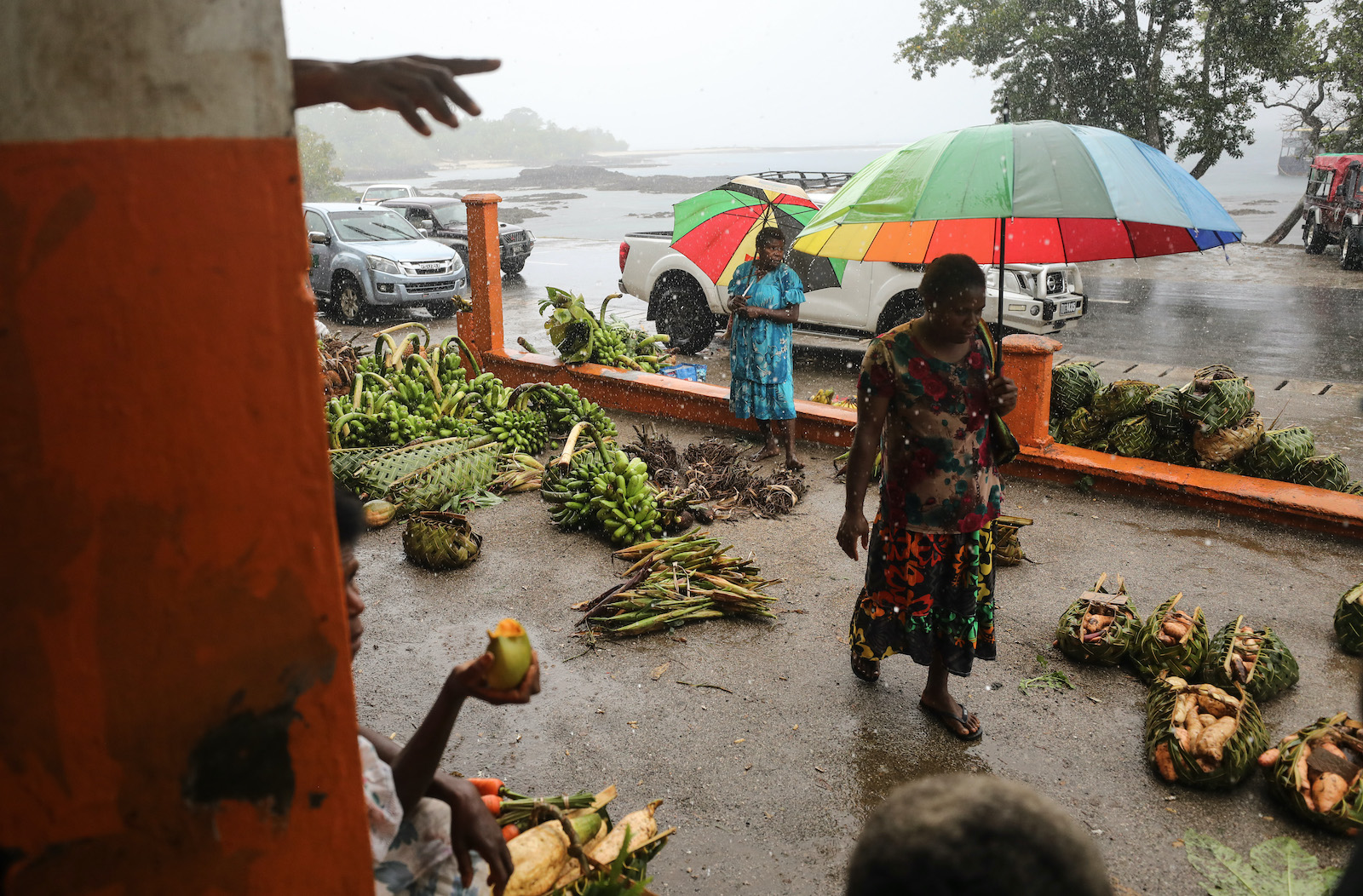
“We were blocked by the security not to enter the COP negotiation,” Raplili said. “We were surprised, and we were saddened to see that our agenda and our demands for COP26 were put aside. We were neglected.”
Inside the negotiation room, representatives of developing nations initially proposed provisions that would support creating a funding mechanism for loss and damage. But in the final days of the conference, many of the provisions were watered down at the behest of the U.S. and European Union. Instead of a clear definition and a process for moving money to vulnerable countries, developing nations had to settle for a section of the final pact called the “Glasgow Dialogue.” It acknowledged that climate change has already and will continue to cause loss and damage globally, and urged developed countries to “provide enhanced and additional support” to address impacts in countries vulnerable to climate change. It said nothing about how such measures should be funded.
Ultimately, the Scottish’s government’s path-breaking announcement didn’t move the conversation “as we hoped for,” Mukayiranga said. Her goal to establish a financing mechanism for loss and damage remains unmet. Thanks to contributions from a few philanthropic organizations and the governments of Wallonia, Scotland, and Denmark, the tally for financing loss and damage now stands at a paltry $19.5 million — a drop in the bucket compared to the billions of dollars in damages that developing nations face each year as climate-fueled flooding, hurricanes, and other disasters wallop vulnerable populations.
Mukayiranga is now looking ahead to COP27 in November. “I’m prepared for a fight,” she told Grist. “They can’t ignore anymore that we are facing loss and damage impacts, and we need loss and damage finance which is new and additional.”
A number of roadblocks stand in the way of Mukayiranga and other loss and damage advocates. Despite the breakthrough in Glasgow, getting loss and damage on the COP27 provisional agenda has once again been an uphill climb — a struggle that advocates blame on continued evasion by the U.S. and other developed nations. The ongoing pandemic, food crises, and fears of an impending global recession are also bound to make the conversation harder. Finally, the demand for additional funding comes even as rich countries still haven’t met their 2015 promise to funnel $100 billion a year to help developing nations adapt to climate change.
Despite all the hurdles, Singh framed the issue as a moral imperative. “Climate is a justice issue,” he said. “A bunch of countries and corporations are responsible for the mess. They have to bloody clean it up. As simple as that.”
There is no official definition of loss and damage, and the lines between adaptation measures, humanitarian aid after natural disasters, and loss and damage funding can be blurry. It may be difficult, for example, to distinguish between interventions that help people adapt to climate change versus those that address losses they’ve already experienced. Not only that, but many climate-related phenomena, such as sea-level rise and the loss of culture that can be a consequence of migration, occur over decades and are hard to quantify.
These are some of the challenges that advocates face as they gear up to push for a funding mechanism at COP27. Among the open questions are: What is the true scale of loss and damage? How should non-economic impacts, such as loss of language or culture, be addressed? And what are potential sources of funding, given that developed nations have blown past the 2020 deadline they set in Paris to provide $100 billion per year in climate-related financing to countries in need?

One analysis conducted by researchers at the Basque Centre for Climate Change in Spain estimated that global warming will cause between $290 billion and $580 billion per year in damages in 2030. That figure, the analysis found, is set to balloon to $1.1 trillion to $1.7 trillion per year in 2050. The estimates do not include non-economic losses due to displacement. Island nations and communities that live on the coasts, for instance, are increasingly having to move inland. The dispersion of these communities can lead to the loss of languages. With rising sea levels, burial sites in these communities are also underwater. Some argue that it is too difficult to put a monetary value on such losses, and that they should be addressed separately. (For example, language loss could be addressed through the support of archival work to document and preserve artifacts of the language in question.)
The massive scale of funding required could come from a number of sources. Taxes on fossil fuel sales, a reduction in fossil fuel subsidies, a tax on international airfares, and debt cancellation for vulnerable countries could help fund the climate compensation package for developing nations.
“There are many ways of raising money if you have political will,” said Singh. “How could we raise trillions when it comes to COVID response? How could we raise trillions when we were faced by a financial crisis, or when we have to now mobilize money to support Ukraine?”
Singh and others advocates want to see a funding mechanism for loss and damage established and operationalized in the next three years. This year, they want countries to agree to establish a fund and define its function. By COP29, they want funds mobilized and channeled to developing countries.
It’s an ambitious timeline. Whether it’ll be met depends very much on the talks in November. In an exclusive interview with Grist, Rania A. Al-Mashat, Egypt’s minister of international cooperation, noted that the African continent’s contributions to global emissions are miniscule compared to the harms it suffers as a result of climate change. Nevertheless, she demurred on questions about the country’s position on loss and damage.
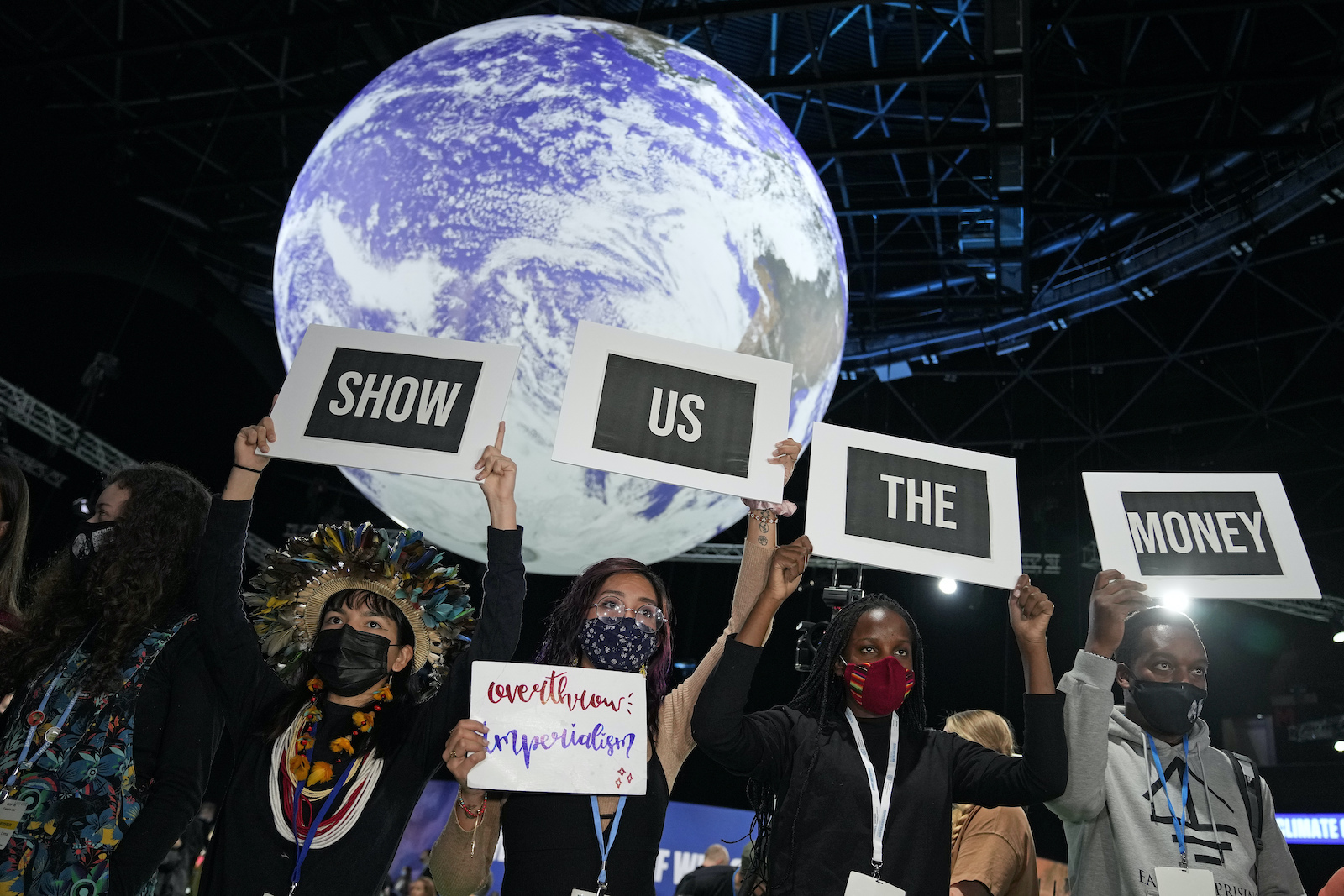
“Egypt, as president of COP, has very clearly said we take an impartial role,” she said, “but Egypt has been a very key player in the negotiations from the very start.”
The Egyptian COP president, Sameh Shoukry, has said that loss and damage is a priority for the country in November, alongside mitigation and other issues related to climate finance. Last month, Shoukry convened a meeting of the heads of delegations to exclusively discuss loss and damage — a first for a COP presidency. Al-Mashat said that the gap between the money available and the funds needed to finance a global green transition is “very, very big.”
“It’s on the negotiators at COP to really assess how much of that needs to be generated,” she told Grist.
In the last year, wealthy nations have moved away from some of their hardline positions on loss and damage. Civil society groups in the European Union believe Ireland could follow in Scotland and Denmark’s footsteps. Australia, which has historically obstructed progress in climate negotiations, also looks set to change its tune with the election of a new and more progressive government.
One reason for the shift may be that the conversation around compensation liability is not emphasized as much as it was in the past. In order to assuage wealthy nations’ fear that they will be on the hook for some unlimited amount in damages, developing nations and climate justice groups have consciously moved away from emphasizing compensation liability and instead have set their targets on an account of loss and damage that does not necessarily imply complicity. Article 8 of the Paris Agreement, for instance, explicitly states that the agreement recognizes loss and damage, but does not “provide a basis for any liability or compensation.”
Some advocates have also pointed out that refusing to fund loss and damage could actually increase the threat of litigation. For instance, Vanuatu, the island nation with a population of about 300,000, is currently seeking an advisory opinion from the International Court of Justice on the legal implications of climate change. An advisory opinion is not binding, but it can help developing countries and small island nations understand the legal arguments they could make and understand their chances of success in court. Vanuatu needs to secure a majority of UN countries’ support for its proposal to compel the court to issue an opinion.
“You can’t just hide under the carpet,” said Singh, of the Climate Action Network. “If they really want to avoid litigation and unlimited liability, they should come to the table and find ways of supporting communities who are facing this crisis. That’s the only way.”
Po Bhattacharyya assisted with translation.
This story was originally published by Grist with the headline Climate reparations are on the agenda at COP27 — whether wealthy nations like it or not on Oct 11, 2022.
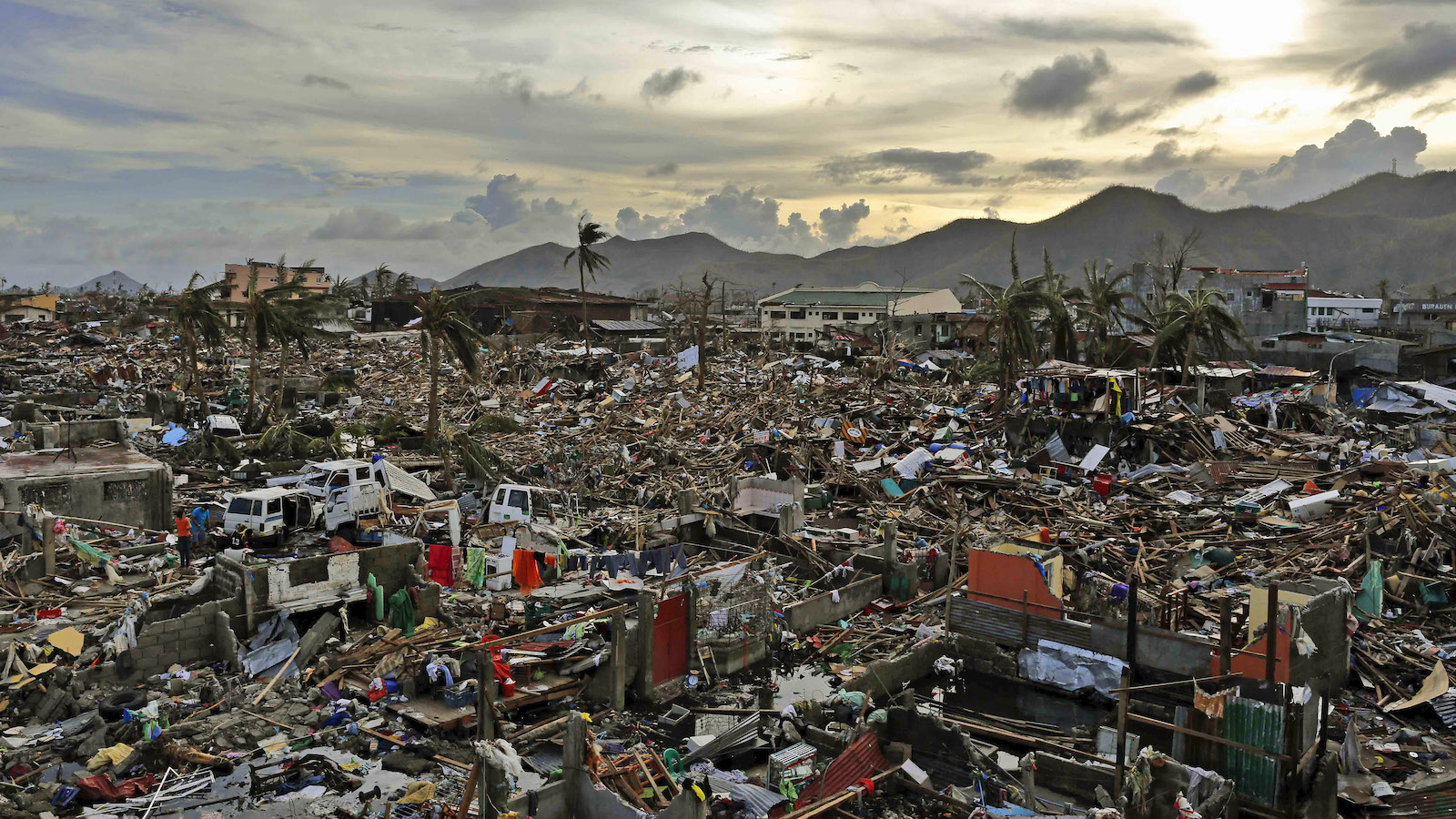

No comments:
Post a Comment